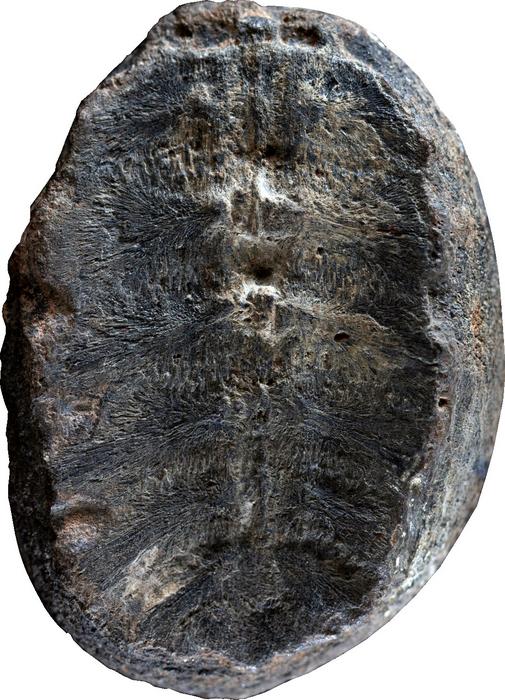The plants in question had been described by Padre Gustavo Huertas in 2003 as Sphenophyllum colombianum and based on collected rocks and fossils near a town called Villa de Levya.The fossils come from Early Cretaceous rocks, between 132 and 113 million years ago, during the dinosaurs’ era. Fossils of Sphenophyllum colombianum were outliers at that time and place— the other known members of the genus Sphenophyllum died out more than 100 million years prior. The plants’ age and locality piqued the interest of Fabiany Herrera, the Negaunee assistant curator of fossil plants at the Field Museum in Chicago, and his student, Palma-Castro.

Photo by Fabiany Herrera and Héctor Palma-Castro.
“We went to the fossil collection at the Universidad Nacional de Colombia in Bogotá and started looking at the plants, and as soon as we photographed them, we thought, ‘this is weird,’” says Herrera, who has been collecting Early Cretaceous plants from northwestern South America, an area of the world with little paleobotanical work.
At first glance, the fossils, about 2 inches in diameter, looked like rounded nodules containing the preserved leaves of the plant Sphenophyllum. But Herrera and Palma-Castro noticed key features that weren’t quite right.
“We spent days searching through wooden cabinets for fossil plants. When we finally found this fossil, deciphering the shape and margin of the leaf proved challenging,” says Palma-Castro.
“When you look at it in detail, the lines seen on the fossils don’t look like the veins of a plant— I was positive that it was most likely bone,” says Herrera. So he reached out to an old colleague of his, Edwin-Alberto Cadena.
“They sent me the photos, and I said, “This definitely looks like a carapace’— the bony upper shell of a turtle,” says Cadena, a paleontologist who focuses on turtles and other vertebrates at the Universidad del Rosario in Bogotá. When he saw the scale of the photos, Cadena recalls, “I said, ‘Well, this is remarkable, because this is not only a turtle, but it’s also a hatchling specimen, it’s very, very small.”
Cadena and his student, Diego Cómbita-Romero of the Universidad Nacional de Colombia, further examined the specimens, comparing them with the shells of both fossil and modern turtles. “When we saw the specimen for the first time I was astonished, because the fossil was missing the typical marks on the outside of a turtle’s shell,” says Cómbita-Romero. It was a little bit concave, like a bowl. At that moment we realized that the visible part of the fossil was the other side of the carapace, we were looking at the part of the shell that is inside the turtle.”
Details in the turtle’s bones helped the researchers estimate how old it was at death. “Turtle growth rates and sizes vary,” says Cómbita-Romero, so the team looked at features like the thickness of its carapace and the spots where its ribs were knitting together into solid bone. “This is a feature uncommon in hatchlings but observed in juveniles. All this information suggests that the turtle likely died with a slightly developed carapace, between 0 to 1 years old, in a post-hatchling stage,” he says.
“This is actually really rare to find hatchlings of fossil turtles in general,” says Cadena. “When the turtles are very young, the bones in their shells are very thin, so they can be easily destroyed.”
The researchers say that the rarity of fossilized baby turtles makes their discovery an important one. “These turtles were likely relatives of other Cretaceous species that were up to fifteen feet long, but we don’t know much about how they actually grew to such giant sizes,” says Cadena.
The researchers don’t fault Padre Huertas for his mistake— the preserved shells really do resemble many fossil plants. But the features that Huertas thought were leaves and stems are actually the modified rib bones and vertebrae that make up a turtle’s shell. Cómbita-Romero and Palma-Castro nicknamed the specimens as “Turtwig,” after a Pokémon that’s half-turtle, half-plant.





Comments